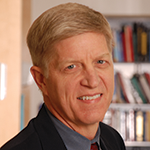Around this time, J. Robin Warren, MBBS, a clinical pathologist in Perth, Australia, developed an interest in studying these newly available gastric biopsies. He was struck by the observation that he could find bacteria growing in the biopsies that showed chronic active gastritis or ulcer formation, but not in normal gastric specimens. He wondered whether these unknown microorganisms might be causing the ulcers. However, there were several problems with this theory, the first being that the highly acidic milieu of the stomach provided a hostile environment for any microbial growth. Second, the accepted dogma of ulcer causation supported the pivotal roles of stress, smoking, and NSAID use. Infections causing ulcers? How preposterous! Unperturbed, Dr. Warren enlisted the help of a gastroenterology fellow working at his hospital, Barry Marshall, DSc.
Dr. Marshall was in his final year of training and was searching for a research project that would keep him busy for the remaining few months of his training. When Warren offered him the role of endoscopist, he was delighted to sign on. They studied 100 consecutive patients with abdominal pain and suspected ulcers and found bacteria in 55 of the 57 specimens obtained from patients with ulcers.4 Yet, despite their best efforts, they could not identify the curiously shaped curved bacillus because it did not seem to grow in culture. They were frustrated by their lack of progress.
As fate would have it, a work stoppage provided a lucky break. Over the Easter holiday break, their hospital’s microbiology laboratory was closed for five days, and this prolonged incubation time allowed the cultures to fully mature. The bacillus was identified as Helicobacter pylori. Yet this observation did not prove causation. Nonetheless, they submitted their study to the Lancet, but the editor had difficulty finding reviewers who believed their results. Most of the experts in the field of peptic ulcer disease either ridiculed their paper or dismissed their hypothesis as being a very silly idea. Sound familiar?
Drs. Marshall and Warren clung to their beliefs about H. pylori. After all, they believed that the first two of Robert Koch’s postulates had been fulfilled. First, the microorganism was abundantly present in those with disease and not in healthy individuals; second, it had been grown in pure culture.
To fulfill Koch’s third postulate, they would have to demonstrate that the bacteria would cause disease when introduced into a healthy organism. But there was no available animal model of the disease to study. Following in the footsteps of Marie Curie, who irradiated herself, and John Hunter, whose self-infection with syphilis and gonorrhea may have been fatal, Dr. Marshall settled the issue by drinking a liquid suspension of H. pylori that was cultured from a patient’s gastric biopsy. A few days later, he developed severe abdominal bloating, bad breath, nausea, and vomiting. Endoscopy and biopsy confirmed the presence of gastritis and H. pylori.
